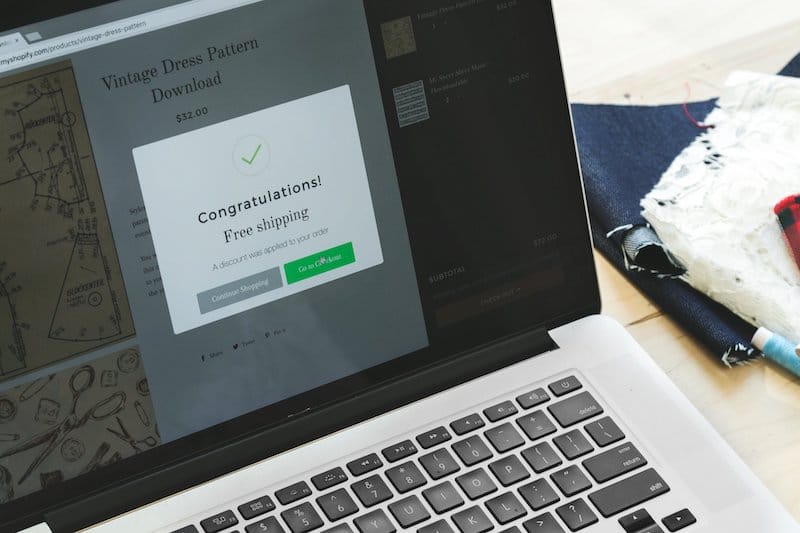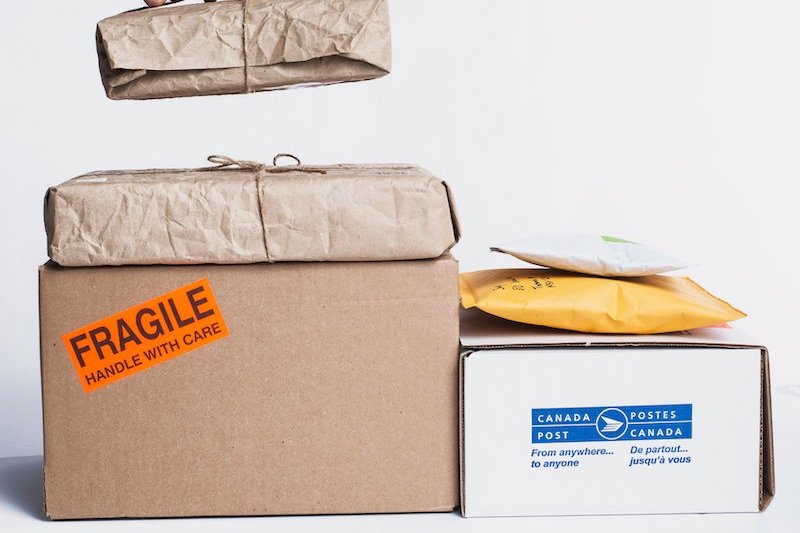How to Find The Best Products To Sell Online

Product Guidelines
When it comes to selling in an online store, it’s important to really know the audience you’re targeting. Selling to an online buyer is very different than selling in a brick and mortar establishment so always consider your target customer. Generally there are some simple guidelines you can follow to ensure you’re picking the right products to sell.
Suitable for Shipping - We know we’ll be shipping all of our products via postal or express carrier services so pick products that are easy to ship, and ones that are also not fragile to reduce the probability of breakage during transport. This also means picking products that aren’t too heavy.
Bigger is not Always Better - Not only are smaller products cheaper to ship, we need to consider how much space will be required to store all of the inventory. Whether you’re storing your products at home or elsewhere, it’s important to pick products that would generally be smaller than the size of a shoe box or egg carton.
Pricing Sweet Spot - Ideally your products should be between $10 to $200 dollars. Products that cost more than this amount appeal to a much smaller audience, and purchasers will spend more time considering the purchase due to the amount. Generally you’ll have a better conversion rate for lower priced products. If your product price is too low, then shipping will be too large a percentage of the total purchase and that will also lead to lower conversions into sales.
Non-seasonal Products - Seasonal products lead to keeping inventory around for longer periods of time, and imbalances in your sales volumes over time. For example if your products are related to valentines day or other national holidays.
The next guidelines aren’t as critical as the first four just mentioned, but are also important to consider.
Shelf life - Products that expire or drop in value the longer that you keep them in your inventory means lower profits. You’ll want to at least limit the inventory that you keep, or you’ll have to liquidate it at a loss periodically. Some examples are food products that expire, or electronics like computer memory or storage that can drop quickly over time. This doesn’t mean that you can’t carry these types of products, just know what your risks are that you’ll need to manage. Ideally you should stay clear of these types of products unless they complement your brand or are complementary to other products in your store.
Competitive pricing - Products that are very price competitive in the marketplace are difficult product categories. For example things that are commodities like toilet paper, or paper towel, or some electronics like memory or storage. People price shop these types of products at common sites that carry these products, so don’t even try and compete in these categories if you can avoid them.
Repeat purchases - would customers buy more than one item at a time when they checkout, or would the product be consumable so that they would come back in the future and purchase more of them?
Solves a problem - does your product solve a clear and important problem for it’s buyers? This makes marketing and creating content around your product much easier. This also helps with the repeat business above as buyers will refer your product to other buyers as well.
Product niche - does your product fit the brand of your company, and can you expand this product to other types of related products. This way you can grow your brand and your business in an organic way.
Accessories - Can your product be accessorized with other products that are related. Many online stores make most of their profit from the accessories and not their main products.
Product competition - Once we’ve found a product that’s got decent demand, we want to make sure we pick one that’s not too competitive in the marketplace. Generally there’s a relationship between the number of Amazon reviews and how competitive the product is. We don’t want to pick a product that has more than 100 reviews if possible. That means that the product sales have been distributed well amongst more than a few sellers.
Product margin - You need to make sure that the price that you are able to charge over the wholesale price will cover your costs of running, marketing, and supporting your product. Take into account how many returns you’re likely to get and factor that into your margin. You also may want to consider at what quantities you can offer free shipping given your price margins.
How To Find Products To Sell Using Amazon Sales Data
Now that you have your store category, it’s time to find a product. So how do you find a product that will be profitable to sell in large numbers? One great way is to let Amazon point you in the right direction. Now that many people are doing more of their shopping from home, Amazon is responsible for more about 50% of all online sales. It’s hard to believe the scale that Amazon has now reached, and there doesn’t seem to be any end in sight to that. To gain some valuable insight to the product sales there you can use Amazon’s Best Seller Ranks (or BSRs). These rankings won’t tell you exactly how many products they sell, or how profitable they are, but they will indicate how popular they are. That’s valuable insight to get you started on the selection process.
Here’s an example of a security camera’s BSR from Amazon:

While using a product’s BSR ranking is a great indicator, searching for products this way can be very time consuming. As with any time consuming task, it always goes faster when you have a powerful tool to make the process go faster. Two popular choices are Jungle Scout and Helium 10. Jungle Scout is what we’ll describe here, and can help you do Amazon product research and save you hundreds of hours of work.

Jungle Scout was founded in 2014 by Greg Mercer. It is basically a product research tool based on Amazon data that helps you find successful products, estimate sales, research keywords, and spy on your competitors all from one easy to use place. Product research is the single most important factor for your business’s success, as the competition for shoppers dollars is increasing every day. If you choose a lousy product, you will fail no matter how much effort you put into marketing it. Using your gut feeling is really not a smart way to choose a product to sell these days. There’s a lot to cover to describe how to use Jungle Scout properly to do it justice here. Here’s an in-depth review of how to Use Jungle Scout Like a Boss.
Using Google Search

Keep in mind that once you pick a product, you’ll want to advertise for it and google search is the most common place people search for products. The easiest way to obtain search information is by using the Google Keyword Planner which is a free search site from Google. Using the exact keywords that people are typing in, you can get a great idea of what products are in demand and how much revenue you can generate. You’ll need to cover the costs of advertising in your product margins. If the most common keywords are very expensive, perhaps it's better to pick a different product that’s less competitive instead.
Using Pinterest

Pinterest is a powerful platform for driving ecommerce shoppers to your online store. Over 90% of weekly Pinterest users use it to make purchase decisions. Pinterest also drives 33% more referral traffic to shopping sites than does Facebook, 71% more than Snapchat, and 200% more than Twitter. Clearly, the potential for your online store on Pinterest cannot be ignored.
As we discussed earlier, it’s better when your product solves a clear problem for it’s buyers. So when using Pinterest for your product research. Search for the problem that your product solves. For example “How to decorate your bathroom” or “How to remove calcium buildup on a sink”. The results will help you pick your product, and help you in the future with your keywords or marketing campaigns.
Describe Your Product
Once you picked your product or products, you need to put together content that describes your product in a way that accurately can be found, and then motivates the buyer to complete the purchase. Every business needs to describe it’s unique value proposition and it’s product descriptions needs to address these main areas:
Your Product Description:
Who is the target buyer for your product? All of the text for your product should be written with the target buyer in mind. What age group, what income group, what gender and what interests do your target buyers have. Use language and phrases that your target audience would use as you would be speaking directly to them.
What problem are you trying to solve? For example a hand cream solves your dry hands problem. A robot vacuum solves the constant build up of dust and dirt in your home. If your product doesn’t solve a specific problem then describe the design and aesthetics of the product.
What specific benefits does your product offer? Once you’ve answered the question as to what problem your product solves, describe how this product has benefits that other products that solve the same problem don’t have. Your product solves this problem better than any of the other products that solve it do. Try to tell a story here, and remember who your target buyer is and talk directly to them. The goal is to elicit an emotion while telling the story as this will dramatically help with the conversion from viewer to buyer. Also consider how this buyer would describe your product to another buyer with similar interests. Remember that we want to generate as many referral purchases as well since we won’t have to pay for any advertising to sell those products.
What do customers look for when buying your product? - Consider what attributes would compel you to buy this specific product. Once you’ve covered the problem you product solves, and benefits it provides, it’s time to get more specific on what customers look for. For the vacuum example is it suction power, or charge time, or running time, or dirt bin storage capacity, that your target audience would be more interested in?
Carry Inventory vs Dropship

Once you’ve picked your products, you need to decide whether to carry your own inventory, or to use a drop shipper. There are pros and cons of each of course. There are four primary e-Commerce Business Models:
- Affiliate store
- Drop shipping store
- Traditional carry inventory online store
- Private label online store
We have a detailed article on these four models in our blog “How to Start a Successful Online Business in 5 Easy Steps”.
How Do I Find My Vendors?
There are many fairytale stories and an equal number of horror stories when running e-commerce stores going from rags to riches or riches to rags. Selecting a great vendor is extremely important regardless of whether or not you choose dropshipping as your e-commerce model.
Make sure you get some samples and get everything in writing with your vendor. Many online stores say communication with their vendor is usually the number one issue reported. Have them provide references to justify their claims. You may want to decide to go with a higher price local vendor to reduce some of the risks, or perhaps ship inventory ahead of time to reduce some of the risks. It’s important to do your homework and research on them before you make this decision.
Conclusion
We hope that you’ve found this article helpful, and that finding products doesn’t have to be just throwing darts at a wall, or brainstorming for months. Unfortunately there are no risk-free ways to start your business and select your products. However, you should now have enough information and some valuable tools now to pick a very profitable product to help grow your business and also benefit your customers quality of life.